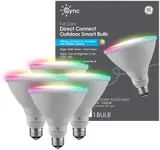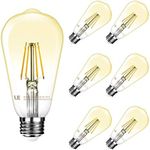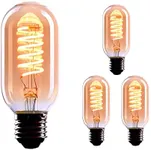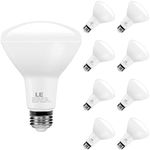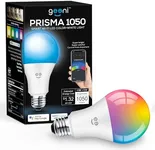Buying Guide for the Best Outdoor Light Bulbs For Cold Weather
Choosing the right outdoor light bulbs for cold weather is essential to ensure that your outdoor spaces remain well-lit and safe, even in the harshest conditions. When selecting these bulbs, you need to consider several key specifications that will determine their performance and longevity in cold temperatures. Understanding these specs will help you make an informed decision and find the best fit for your needs.Temperature RatingThe temperature rating of a light bulb indicates the range of temperatures in which the bulb can operate effectively. This is crucial for outdoor bulbs used in cold weather, as not all bulbs are designed to function in freezing conditions. Temperature ratings are usually given in degrees Fahrenheit or Celsius. For cold weather, look for bulbs with a low-temperature rating, such as those that can operate at -20°F (-29°C) or lower. If you live in an area with extremely cold winters, choose bulbs with the lowest temperature rating available to ensure reliable performance.
Type of BulbDifferent types of bulbs perform differently in cold weather. LED bulbs are generally the best choice for cold climates because they are highly efficient and can operate at very low temperatures without any issues. Incandescent and halogen bulbs, on the other hand, may not perform as well in the cold and can have shorter lifespans. When selecting a bulb type, consider LEDs for their durability and energy efficiency in cold weather conditions.
LumensLumens measure the brightness of a light bulb. This is important for outdoor lighting, as you want to ensure that your space is adequately illuminated. Lumens can range from a few hundred to several thousand. For general outdoor lighting, such as pathways or porches, bulbs with 800-1,200 lumens are usually sufficient. For larger areas or security lighting, you may need bulbs with 1,500 lumens or more. Choose the lumen output based on the size of the area you need to light and the level of brightness you prefer.
Color TemperatureColor temperature is measured in Kelvins (K) and describes the color of the light emitted by the bulb. This can affect the ambiance and visibility of your outdoor space. Lower color temperatures (2,700K-3,000K) produce a warm, yellowish light, while higher color temperatures (4,000K-5,000K) produce a cool, bluish light. For outdoor areas where you want a cozy, inviting atmosphere, choose bulbs with a lower color temperature. For areas where you need clear, bright light for visibility and security, opt for higher color temperatures.
Durability and Weather ResistanceOutdoor light bulbs need to withstand various weather conditions, including rain, snow, and wind. Look for bulbs that are specifically labeled as weather-resistant or suitable for outdoor use. These bulbs are designed to be more durable and can handle exposure to the elements. Additionally, consider bulbs with a protective coating or those encased in a weatherproof housing to ensure they last longer and perform well in harsh conditions.
Energy EfficiencyEnergy efficiency is an important factor to consider, especially for outdoor lighting that may be on for extended periods. LED bulbs are the most energy-efficient option, using significantly less electricity than incandescent or halogen bulbs. Energy-efficient bulbs not only reduce your energy consumption but also lower your utility bills. When choosing outdoor light bulbs, look for those with an ENERGY STAR rating or other energy efficiency certifications to ensure you are getting the most efficient option available.


